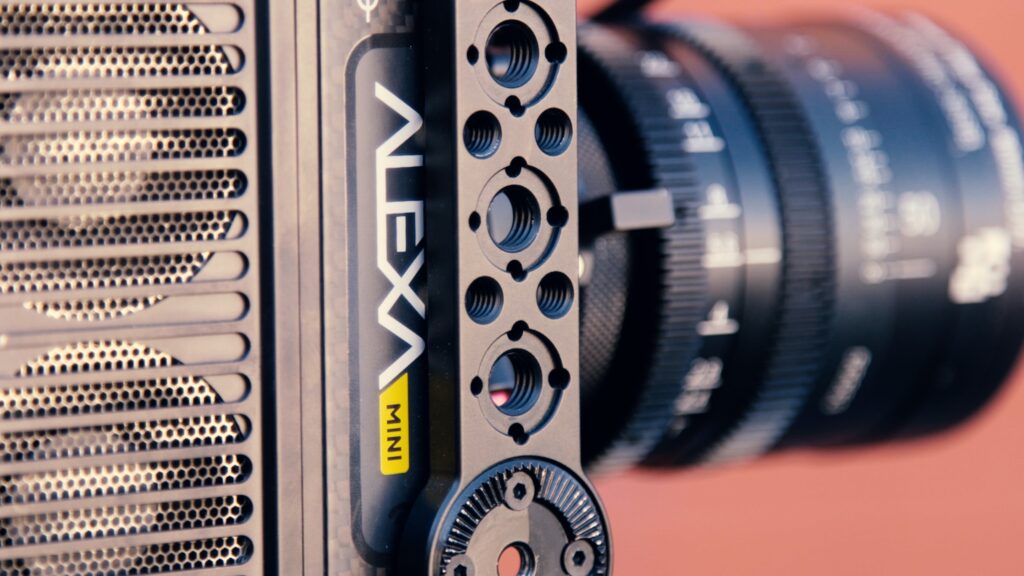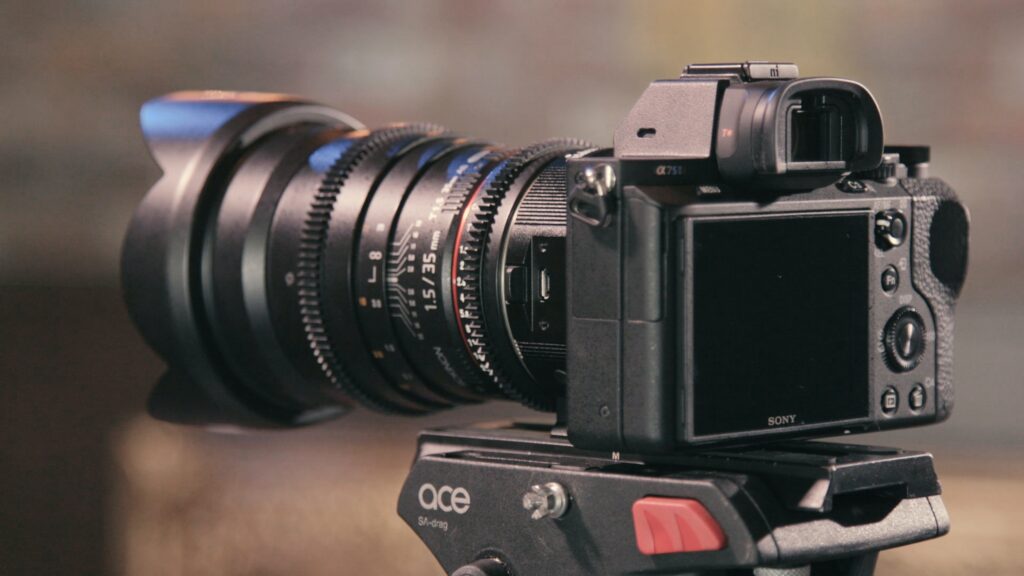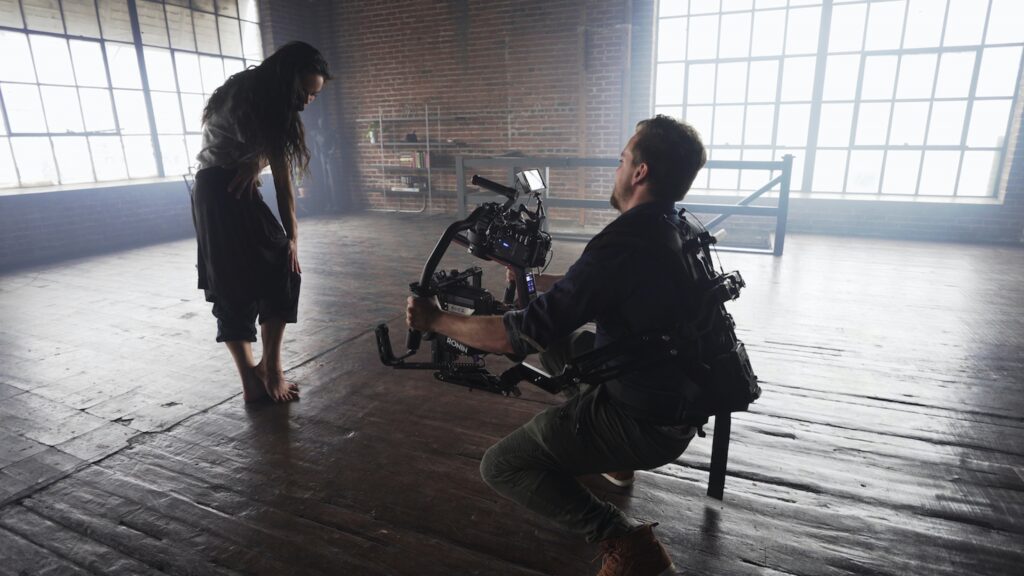In the ever-evolving world of film criticism, it is essential to question whether critics truly address the role of cinematographic lenses and camera work in their reviews. As film enthusiasts, students, and professionals, we are keen to delve into the meta-discussion surrounding the film review industry and its impact on the broader audience. By exploring questions, issues, and trends within this industry, we aim to shed light on the ethics, methodologies, and overall influence of movie reviews, with a specific focus on the often overlooked aspect of cinematography. From FAQs to interviews with critics, our aim is to provide well-researched discussions on this vital but frequently ignored topic, utilizing data, expert opinions, and academic references to support our arguments.
The Importance of Cinematographic Lenses and Camera Work

1.1 Definition of Cinematographic Lenses and Camera Work
Cinematographic lenses and camera work refer to the tools and techniques used in filmmaking to capture and manipulate visual imagery. Cinematographic lenses are specialized optics that determine the angle of view, depth of field, and overall look of a shot. Camera work involves the movement of the camera, such as pans, tilts, and tracking shots, to enhance the storytelling and visual impact of a film.
1.2 Historical Significance
The use of cinematographic lenses and camera work dates back to the early days of cinema. Filmmakers quickly realized the potential of these tools to enhance storytelling and immerse audiences in their narratives. From the early experiments with handheld cameras to the development of specialized lenses, cinematographers and directors have continuously pushed the boundaries of visual storytelling through their innovative use of cameras and lenses.
1.3 Evolution and Advancements
Over the years, cinematographic lenses and camera work have evolved significantly. Technological advancements have led to the development of more sophisticated lenses with greater optical capabilities. Cinematographers now have access to a wide range of lenses, including prime lenses, zoom lenses, and specialty lenses, each providing unique visual characteristics.
Likewise, camera technologies have advanced, allowing for smoother camera movements, better stabilization, and higher resolution. This evolution has opened up new possibilities for filmmakers to create visually stunning and immersive experiences for audiences.
1.4 Influence on Visual Storytelling
Cinematographic lenses and camera work play a crucial role in visual storytelling. The lens choice can evoke different emotions, convey a specific atmosphere, or establish a visual language unique to the film. Camera movements can guide the audience’s attention, create a sense of space, or emphasize dramatic moments.
In essence, the cinematographic choices made by filmmakers directly influence how the story is presented and experienced by the audience. Understanding and appreciating the impact of these choices is vital for both filmmakers and film critics.
2. Critics’ Role in Movie Reviews
2.1 Overview of Film Criticism
Film criticism is the practice of evaluating and analyzing films. Critics examine various aspects of a film, including its narrative, performances, direction, and technical elements, to provide an informed opinion and assessment. While film criticism can vary in style and approach, its primary objective is to provide an insightful and objective evaluation of a film’s quality and merit.
2.2 Objectives of Film Criticism
One of the main objectives of film criticism is to guide and inform the audience’s viewing choices. By critically assessing a film’s strengths and weaknesses, critics help viewers make informed decisions about what movies to watch. Additionally, film criticism contributes to the ongoing dialogue and discourse surrounding cinema, enriching the understanding and appreciation of the art form.
2.3 Evaluation Criteria
When it comes to evaluating cinematographic lenses and camera work, critics consider various criteria. These may include the technical execution and craftsmanship of the cinematography, the appropriateness of lens choices for particular scenes or narrative purposes, and the effectiveness of camera movements in enhancing the storytelling.
Critics also analyze the visual aesthetics created by the cinematography, assessing the composition, lighting, and overall visual impact of the film. They examine how the cinematography contributes to the film’s overall artistic vision and whether it aligns with the director’s intentions.
2.4 Role of Critics in Shaping Public Opinion
Film critics play a significant role in shaping public opinion about movies. Their reviews can influence the perception and reception of films, ultimately impacting box office performance and a film’s long-term reputation. By addressing the role of cinematographic lenses and camera work, critics can highlight the technical and artistic aspects that contribute to a film’s success or failure.
Good film criticism goes beyond mere critique and offers insights into the craft of filmmaking. By discussing the cinematography in-depth, critics can enhance the audience’s appreciation of the visual storytelling elements and encourage a more nuanced understanding of the filmmaking process.
3. Cinematographic Lenses and Camera Work in Film Reviews
3.1 Inclusion of Cinematographic Elements in Reviews
In film reviews, critics often discuss the cinematographic lenses and camera work employed in a film. They evaluate how these elements contribute to the overall visual style, tone, and storytelling. By including in-depth analysis of cinematography, critics provide a more comprehensive understanding of the film and its artistic merit.
3.2 Analysis of Lens Choices
Cinematographic lenses come in different focal lengths, each producing a distinct visual effect. Critics assess the lens choices made by cinematographers, considering factors such as focal length, depth of field, and distortion. They analyze the intentional use of lenses to achieve specific storytelling objectives or create a desired atmosphere.
3.3 Evaluating Camera Techniques and Movements
Camera techniques and movements are essential tools for filmmakers to enhance storytelling and create visual impact. Critics evaluate how the camera is used in a film, examining the effectiveness of techniques such as panning, tilting, tracking shots, and handheld camera work. They assess how these techniques contribute to the film’s narrative, mood, and audience engagement.
3.4 Impact of Cinematography on Audience Experience
Critics discuss the impact of cinematographic lenses and camera work on the audience’s viewing experience. They analyze how the visual choices made by filmmakers affect the audience’s emotional response, immersion in the story, and overall enjoyment of the film. By highlighting the importance of cinematography, critics contribute to a more well-rounded understanding of a film’s artistic and technical merits.
4. The Challenges of Addressing Cinematographic Lenses and Camera Work

4.1 Subjectivity in Evaluating Cinematography
Evaluating the cinematography of a film can be inherently subjective. Different viewers may have different interpretations and preferences regarding visual aesthetics. Critics face the challenge of balancing personal taste with objective analysis when discussing cinematographic lenses and camera work. However, by providing clear reasoning and context for their evaluations, critics can help readers navigate the subjectivity inherent in evaluating cinematography.
4.2 Limited Technical Knowledge of Critics
While film critics are knowledgeable about cinema and storytelling, they may not always possess the same level of technical expertise as cinematographers and camera operators. Understanding the intricacies of lenses, camera systems, and the physics of light can be challenging for those without a technical background. Critics must acknowledge these limitations and focus on evaluating the visual impact and effectiveness of the cinematography rather than delving into the technical minutiae.
4.3 Balancing Technical and Artistic Considerations
Critics must strike a balance between technical analysis and appreciating the artistic intent behind cinematographic choices. While it is essential to assess the technical execution and craftsmanship, it is equally important to consider how the cinematography supports the themes, emotions, and narrative of the film. Balancing technical evaluation with an appreciation for the artistic vision allows critics to provide a more nuanced and holistic assessment of the cinematography.
5. Case Studies: Critics Addressing Cinematographic Lenses and Camera Work
5.1 Critic A: Comprehensive Analysis of Cinematographic Techniques
Critic A demonstrates the importance of addressing cinematographic lenses and camera work by providing a comprehensive analysis of the various techniques used in a film. They examine lens choices, camera movements, and composition while considering their impact on the narrative, visual style, and audience experience. By providing detailed insights, Critic A enhances the reader’s understanding of the film’s cinematography and its contribution to the overall artistic merit.
5.2 Critic B: Focusing on Impact on Narrative
Critic B takes a narrative-focused approach to addressing cinematographic lenses and camera work. They analyze how the visual choices made by the filmmakers enhance the storytelling, evoke emotions, and convey thematic elements. By emphasizing the narrative impact of the cinematography, Critic B highlights the importance of addressing these elements in film reviews and their significance in shaping the audience’s understanding and appreciation of the film.
5.3 Critic C: Discussing Intentional Lens Distortions
Critic C focuses on a specific aspect of cinematographic lenses by discussing intentional lens distortions in a film. They explore how these distortions contribute to the film’s visual vocabulary, create a specific aesthetic, and enhance the storytelling. By delving into the intentional use of lens distortions, Critic C showcases the significance of addressing unique and unconventional cinematographic techniques in film reviews.
6. The Influence of Critics on Cinematographic Choices

6.1 Collaboration Between Filmmakers and Critics
Filmmakers often take into consideration the opinions and insights of film critics, including their evaluations of cinematographic lenses and camera work. Constructive criticism and thoughtful analysis can inform and influence filmmakers’ choices in future projects, pushing them to explore new techniques or refine their approach. This collaborative relationship between filmmakers and critics contributes to the continuous evolution and advancement of cinematographic techniques.
6.2 The Power of Positive or Negative Reviews
Positive or negative reviews that address the role of cinematographic lenses and camera work can have a significant impact on audience perception and box office performance. When critics highlight the technical excellence or innovative use of cinematography in a film, it can generate curiosity and positive buzz. Conversely, criticism of poorly executed cinematography can deter audiences from watching a film. Therefore, critics play a crucial role in shaping audience expectations and influencing the overall reception of a film’s cinematographic choices.
6.3 The Impact on Cinematography Trends
Critics addressing the role of cinematographic lenses and camera work can also influence industry trends. By highlighting successful examples and innovative techniques, critics can inspire cinematographers, directors, and other filmmakers to explore similar approaches in their work. This influence can lead to the emergence of new trends and the continuous evolution of cinematographic techniques in the industry.
7. Ethical Considerations: Balancing Criticism and Appreciation
7.1 The Fine Line Between Criticism and Artistic Appreciation
Critics addressing cinematographic lenses and camera work must navigate the fine line between providing honest critique and acknowledging the artistic intentions of the filmmakers. While it is essential to evaluate the technical and artistic merits of the cinematography, critics should strive to maintain a respectful and appreciative tone in their reviews. Balancing critique with an understanding of the creative process ensures that criticisms are constructive and contribute to the broader appreciation of the filmmaker’s artistry.
7.2 Addressing Cinematographic Flaws with Respect
When discussing flaws or weaknesses in the cinematography, critics must do so with respect and sensitivity. Pointing out shortcomings or technical errors should be done in a constructive manner, focusing on how improvements could enhance the overall viewing experience or better align with the film’s intentions. By maintaining a measured and respectful tone, critics can contribute to a more informed and productive dialogue surrounding cinematographic lenses and camera work.
7.3 Promoting Technical Understanding among Critics
To address the challenges posed by limited technical knowledge among critics, it is essential to promote technical understanding within the profession. Film criticism education can incorporate elements of cinematography, providing critics with a foundation to evaluate and discuss the technical aspects of filmmaking. By empowering critics with technical knowledge, they can better address the role of cinematographic lenses and camera work and provide more informed and insightful analyses.
8. The Future of Cinematographic Lenses and Camera Work in Film Reviews
8.1 Incorporating Technical Analysis in Film Criticism Education
As the importance of addressing cinematographic lenses and camera work continues to grow, it becomes imperative to incorporate technical analysis into film criticism education. By equipping aspiring critics with a deeper understanding of the technical aspects of cinematography, film schools and programs can produce a new generation of critics capable of providing comprehensive evaluations of films’ visual storytelling elements.
8.2 Rise of Visual Essayists as Film Critics
With the increasing dominance of digital platforms and the popularity of video essays, visual essayists are emerging as influential voices in film criticism. Visual essayists have the advantage of using cinematographic techniques themselves to effectively analyze and communicate their ideas. Their ability to demonstrate visual concepts fosters a greater appreciation of cinematography and encourages audiences to engage more deeply with the visual aspects of films.
8.3 Technological Advancements and their Influence on Criticism
Technological advancements in cinematographic lenses and camera equipment continue to shape the industry and influence film criticism. Advancements such as new lens designs, camera stabilization systems, and digital post-production techniques provide filmmakers with unprecedented creative possibilities. Critics must stay informed about these advancements to evaluate how they impact the visual storytelling of films and to provide meaningful analysis in their reviews.
9. Perspectives from Industry Professionals
9.1 Interviews with Cinematographers
To provide a well-rounded discussion on the role of cinematographic lenses and camera work, it is crucial to include perspectives from industry professionals, particularly cinematographers themselves. Interviews with renowned cinematographers can offer insights into their creative processes, their approach to lens selection, and the impact of camera movements on their storytelling. These interviews provide a valuable perspective that enhances the overall understanding and appreciation of cinematography.
9.2 Perspectives from Directors and Editors
Directors and editors also play a significant role in the decision-making process when it comes to cinematographic lenses and camera work. Including perspectives from these professionals can shed light on the collaborative nature of filmmaking and how all departments work together to achieve a cohesive visual vision. Their insights can provide a comprehensive understanding of how cinematographic choices are made and the considerations involved in bringing a film’s visual elements to life.
10. Conclusion
10.1 Recap of Key Findings
Throughout this article, we have explored the importance of addressing cinematographic lenses and camera work in film reviews. We have discussed the definition, historical significance, and evolution of these elements, as well as their impact on visual storytelling. We have also delved into critics’ role in movie reviews, the challenges they face, and the influence they have on cinematography trends.
10.2 The Importance of Addressing Cinematography in Film Reviews
Addressing cinematographic lenses and camera work in film reviews is crucial for a comprehensive evaluation of a film’s craftsmanship and artistic merit. By analyzing these elements, critics contribute to the appreciation of the visual storytelling elements, inform audience viewing choices, and shape public opinion.
10.3 Call for Greater Appreciation of Cinematographic Artistry
As the film industry continues to evolve and embrace innovative techniques, it is important for audiences and critics to develop a deeper appreciation for the artistry behind cinematographic lenses and camera work. By recognizing the significant role these elements play in enhancing storytelling and creating immersive experiences, we can foster a greater understanding of the craft of filmmaking and elevate the discourse surrounding cinema.
